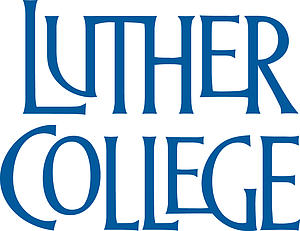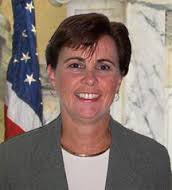The nine Northeastern and Mid-Atlantic states participating in the Regional Greenhouse Gas Initiative said their 28th auction of carbon dioxide allowances raised $85 million for investment in energy efficiency, renewable energy and other programs. More than 15.5 million allowances were sold at the clearing price of $5.50. Bids for the CO2 allowances ranged from $2.05 to $12.50 per allowance.
The market for cost-containment reserve (CCR) allowances was not as robust. The CCR is a fixed additional supply of allowances that are only available for sale if CO2 allowance prices exceed certain price levels ($6 in 2015, $8 in 2016, and $10 in 2017, rising by 2.5% each year thereafter to account for inflation). Ten million CCR allowances were for sale, and none sold.
The June 3 auction was the second auction of 2015.
More: RGGI
DELAWARE
Opposition to Delaware City Refinery’s Water Use Permit Growing

A coalition of lawmakers and environmentalists has asked the Department of Natural Resources and Environmental Control to uphold an earlier recommendation that the refinery install a cooling tower system, which would reduce water consumption and kill less aquatic life. The refinery, which was designed and built in the 1950s, is using older technology that last received a five-year water-use permit in 1997. The refinery has been operating under permit extensions for more than a decade.
Regulators estimated the cost of a tower cooling system at about $75 million. Refinery owner PBF put the price at closer to $300 million. The public comment period on the proposed permit ends this week.
More: The News Journal
ILLINOIS
Stricter Water Temperature Limits Could Result in Closing of Two NRG Plants

The board has set temperature limits for waterways into which NRG’s Joliet Station and Will County plant discharge cooling water. NRG sought a six-year period to conduct new studies, analyze the data and petition for variances. But the board denied the extension request and says NRG has only three years to meet the goals.
If finalized in their current form, the proposed thermal water quality standard would “result in the closure of certain industrial facilities,” NRG wrote in the request for the extension.
More: Midwest Energy News
IOWA
State Supreme Court Ruling Allows Luther College to Go Solar

The system, which will be one of the state’s largest solar facilities, is designed to provide about 6% of the school’s electricity needs. A big benefit is that it will produce power during peak hours, helping the school to reduce its demand charge with the area utility, Alliant Energy, which currently makes up about 35% of its bill.
More: Midwest Energy News
KENTUCKY
Nearly 60% of State’s Coal-Fired Plants Will Close by 2040
More than 58% of the state’s coal-fired power plants would be retired by 2040, even before taking into account proposed U.S. Environmental Protection Agency emission regulations, according to state Energy and Environment Secretary Len Peters.
Peters told a legislative committee earlier this month that state generators have already proposed retiring plants or converting them to natural gas to comply with EPA’s Mercury and Air Toxics Standards. Even without the pressure to meet the proposed Clean Power Plan, about 5,830 MW of the state’s aging coal-fired fleet will reach retirement age of about 65 years by 2040. Peters said the new emissions regulations and the price of construction means that it is unlikely Kentucky will see many, or any, new coal-fired plants being built.
More: WKMS
MAINE
State Pilots First Energy Storage System

The system, which would typically be charged at night and discharged during the day, was developed through a partnership led by New York City-based Convergent Energy + Power. The pilot program, which can supply up to 500 KWh for six hours, is being run by GridSolar for the Public Utilities Commission.
More: Portland Press Herald; Convergent Energy + Power
MANITOBA
Manitoba Hydro in Spotlight During PUB Hearings

At a board hearing, Progressive Conservative party leaders called Manitoba Hydro’s predicted long-range losses of $75 million to $192 million “mind-boggling.” Though it predicts healthy profits during the next three years, the utility projects a downturn in power export opportunities and an expensive capital construction campaign that will turn profits into losses starting in 2018.
Premier Greg Selinger’s administration has touted the utility’s near-term success.
More: Winnipeg Free Press
MARYLAND
Consumer Advocate Appeals PSC OK of Exelon-Pepco Deal

The Office of People’s Counsel last week appealed the Public Service Commission’s approval of Exelon’s acquisition of Pepco Holdings Inc., saying consumers will suffer from the deal. The OPC filed its petition for judicial review in the Queen Anne’s County Circuit Court.
“The majority decision to approve this transaction was flawed and failed to address the single most important aspect of the law — first, do no harm,” People’s Counsel Paula Carmody said.
The PSC voted 3-2 to approve Exelon’s takeover, which would make the company the electric supplier for 80% of Maryland ratepayers. (See How Exelon Won over Maryland.) D.C. regulators have yet to rule on the deal.
More: Office of People’s Counsel
MINNESOTA
Regulators OK We Energy’s Acquisition of Integrys; Just Needs Illinois’ Approval Now
The Public Utilities Commission on Friday approved We Energy’s acquisition of Integrys Energy Group, joining Wisconsin, Michigan and and various federal authorities. We Energy now needs just the nod from the Illinois Commerce Commission to complete the transaction. The $9.1 billion deal, when completed, will create WEC Energy Group Inc., which will have 4.4 million customers in four states and be headquartered in Milwaukee. WEC will also own 60% of American Transmission Co.
The ICC is expected to rule on the acquisition at the end of this month. At the forefront of the issue in Illinois is the ongoing multibillion-dollar gas main replacement project going on in Chicago by Integrys subsidiary Peoples Gas. Wisconsin Energy has said it will put together a new upper management team at Peoples. That company, and the gas main replacement project, was the subject of a highly critical audit. The final cost of the gas main project is still unknown, and the state Attorney General’s office has begun a probe into the entire project.
More: Journal Sentinel; Milwaukee Business Journal
NEW HAMPSHIRE
Eversource Review of ‘Grand Bargain’ Begins
Eversource to Sell New Hampshire Plants.)
Eversource, political leaders, the state Office of Energy and Planning, the PUC Office of Consumer Advocate and staff members of the PUC participated in negotiations that led to the filing. The agreement is also supported by the electrical trade unions; the Conservation Law Foundation; trade organizations representing independent power plant owners and competitive electricity suppliers; and the New Hampshire Sustainable Energy Association.
The settlement is likely to yield about $380 million in customer savings over the next five years, according to state Sen. Dan Feltes. Hearings are expected to begin this fall, with legislative updates required in October and a PUC decision by the end of the year.
More: New Hampshire Union Leader
NEW JERSEY
Deal Will Keep Lights on at Revel — for Now

Glenn Straub’s Polo North Country Club, which bought Revel for $82 million out of bankruptcy court in April, has temporarily resolved his dispute with ACR Energy Partners over the cost of energy services it supplies and whether his company should have to assume the previous owner’s commitments to pay for the costs of the ACR power plant’s construction. ACR initially cut service to the complex, but lawmakers ordered the company to restore service to maintain fire protection systems and the warning light atop the 47-story building.
Under the agreement, ACR will maintain power until one of four things happens: the parties reach a long-term contract; a state order requiring ACR to provide service is canceled or changed; a judge allows ACR to stop providing service; or Polo North finds a new energy provider.
More: Associated Press
NEW YORK
NYISO Report Touts Market Benefits
The state’s transition to competitive electricity markets has contributed to dramatic benefits for consumers and the state’s power grid, including nearly $7 billion in savings and reduced costs and significant reductions in emissions, among numerous other impacts, according to a NYISO report.
The report, “Powering New York — Responsibly,” examines the 15-year period since the inception of New York’s competitive market in 2000. It quantifies the major contributions made by NYISO to help the state meet its future energy needs and achieve its goals for cleaner energy and improved efficiency.
“The federal and state policy decisions that produced electric industry restructuring were founded on the conviction that competitive wholesale electricity markets expeditiously and effectively facilitate evolution of the grid,” said NYISO CEO Stephen Whitley.
More: NYISO
NORTH CAROLINA
Duke Stays out of Solar Bill Fray
Duke Energy is staying out of the debate as state lawmakers consider bills that could affect solar development.
One bill would let homeowners lease or finance solar systems through third-party developers like SolarCity. Another would cap utilities’ required purchases of renewable energy at 6% of demand this year, compared with the current target of 12.5%.
“There have been a half-dozen bills in this session dealing with energy,” Duke CEO Lynn Good told Bloomberg News. “It’s difficult to handicap which ones will go through.”
More: Bloomberg News
State Supreme Court Gives Duke Some Relief from Ash-Cleanup Ruling
The state Supreme Court last week vacated a lower court ruling that said regulators could force the utility to take immediate action to clean up coal ash-contaminated groundwater. The high court said legislation passed last year ordering coal ash remediation made the “immediate action” ruling unnecessary.
Environmental activists said the lower court ruling, arising from a 2012 case and predating Duke’s January 2014 ash spill on the Dan River, meant that Duke should be forced to stop the pollution at the source before any work restoring groundwater is taken. But the utility and state regulators said full assessments of the groundwater contamination is necessary first.
“We think the court’s ruling is appropriate, and we are pleased to close this issue so we can continue moving ahead with safely and permanently closing ash basins,” Duke spokeswoman Erin Culbert said.
More: Charlotte Observer
PENNSYLVANIA
Boston Company Eyes State for Gas-Fired Plant

Vice President Michael Vesca said construction could start in 2017 on the plant, which would be located near Vinco, about 65 miles east of Pittsburgh.
More: Associated Press
Penelec Spends $6M to Serve New Gas-Pumping Station

New electric distribution lines will deliver 2.8 MW from substations in McConnelltown and Blain to new pumping stations in Marcklesburg and Doylesburg.
Completion is expected in late summer.







